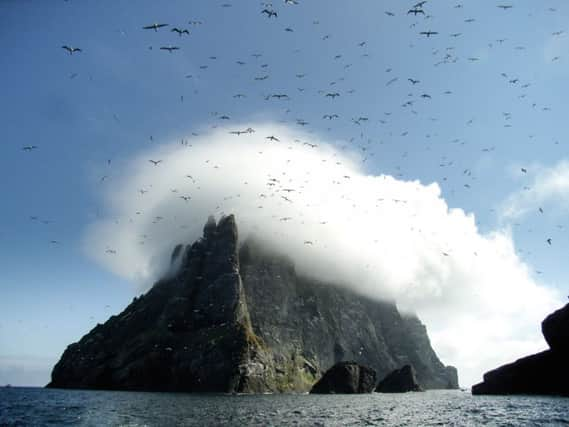Book proves St Kildans “connected” to Scotland


They say inhabitants of St Kilda, Scotland’s westernmost islands, were “connected” to communities in the north-west and functioned as “a living part of Scotland” throughout their 3,000-year history.
Their findings are contrary to popular belief that islanders on the precipitous and windswept archipelago were a “lost tribe” who existed in isolation from the rest of civilisation until tourism began in the 19th century.
Advertisement
Hide AdAdvertisement
Hide AdGeorge Geddes and co-writer Angela Gannon spent more than nine months living and working on the islands as part of an eight-year project to research their rich and diverse history.
They have now collated their findings in a new book, St Kilda: The Last and Outmost Isle, which features rare and previously unseen images of life at “the edge of the world” alongside modern material.
“St Kilda is one of the most mythologised and misunderstood places on earth,” according to Mr Geddes, an archaeologist at government-run conservation charity Historic Environment Scotland.
“Most of us view the islands with the romantic notion of the people as a lost tribe, removed from civilisation. What we have discovered is that this was never really the case.
“Throughout its human history, St Kilda has always been connected to a network of communities scattered across the north-western seaboard and Highlands of Scotland.”
He added: “What makes these islands so remarkable is not their distance from ‘civilisation’, but rather their enduring capacity to remain a living part of Scotland over the course of some 3,000 years.”
St Kilda, one of the few sites globally to have dual Unesco world heritage status, has been officially uninhabited for the past 85 years. The last native residents were evacuated in 1930 when the population fell so low it became unsustainable.
Today the only year-round residents are military personnel, while a variety of field workers spend summer there.
Advertisement
Hide AdAdvertisement
Hide AdBut archaeological evidence shows people have lived on the far-flung outcrops for millennia, making use of almost every part of the jagged terrain.
Despite lying 100 miles from mainland Scotland, St Kilda once supported up to 180 people. Existence was tough, with locals surviving largely on seabirds and their eggs – gathered on the towering sea stacks.
A combination of illnesses brought by increased contact with outsiders through tourism and upheaval during the First World War saw the population plummet in the 20th century.
In 1930 the last 36 remaining inhabitants of the isle of Hirta were voluntarily relocated to Lochaber, on the mainland.